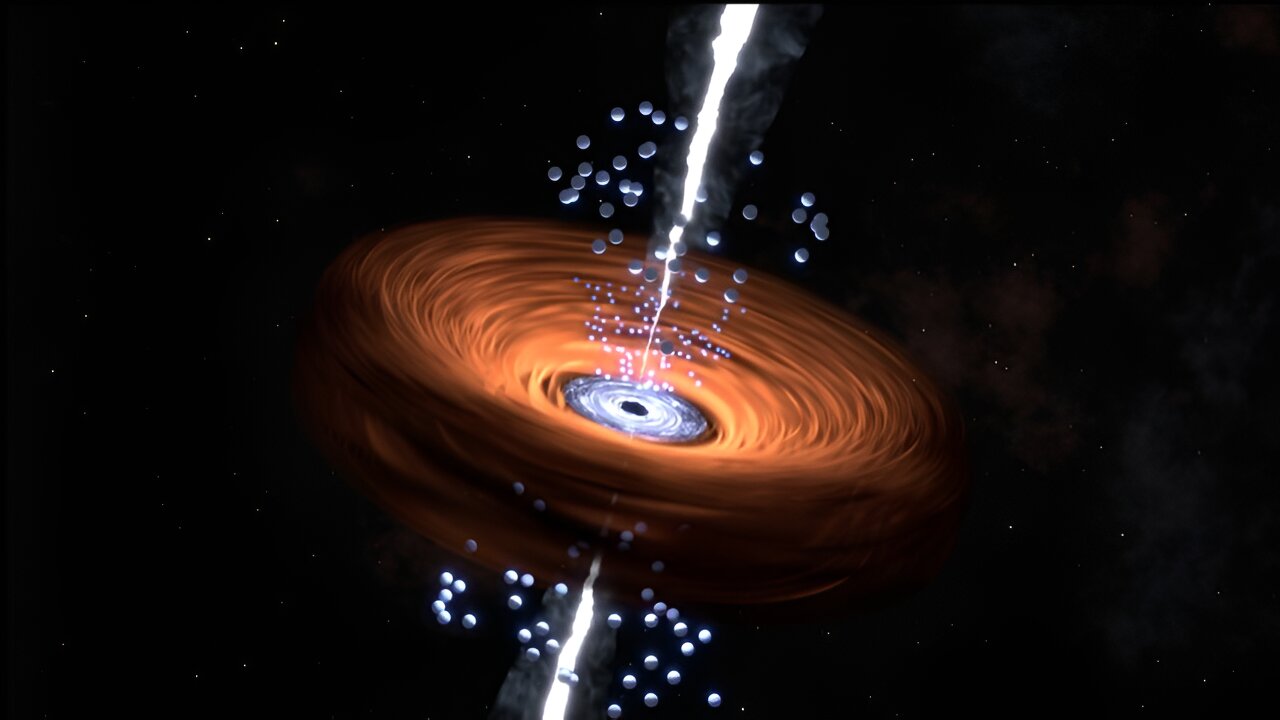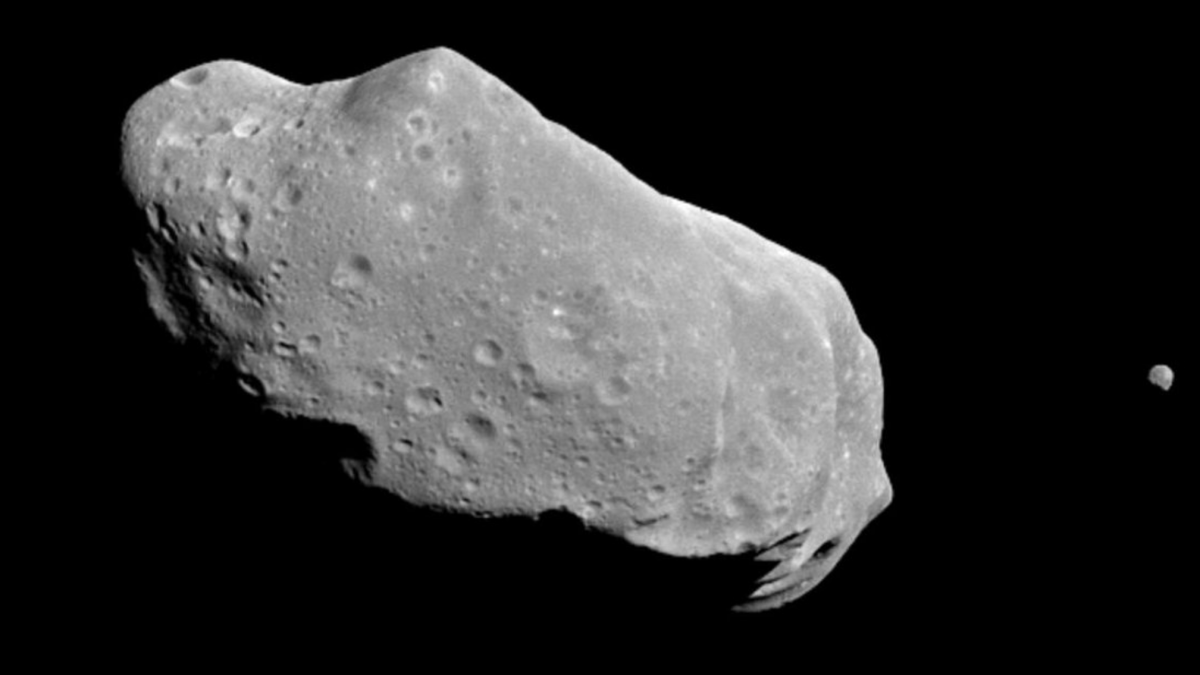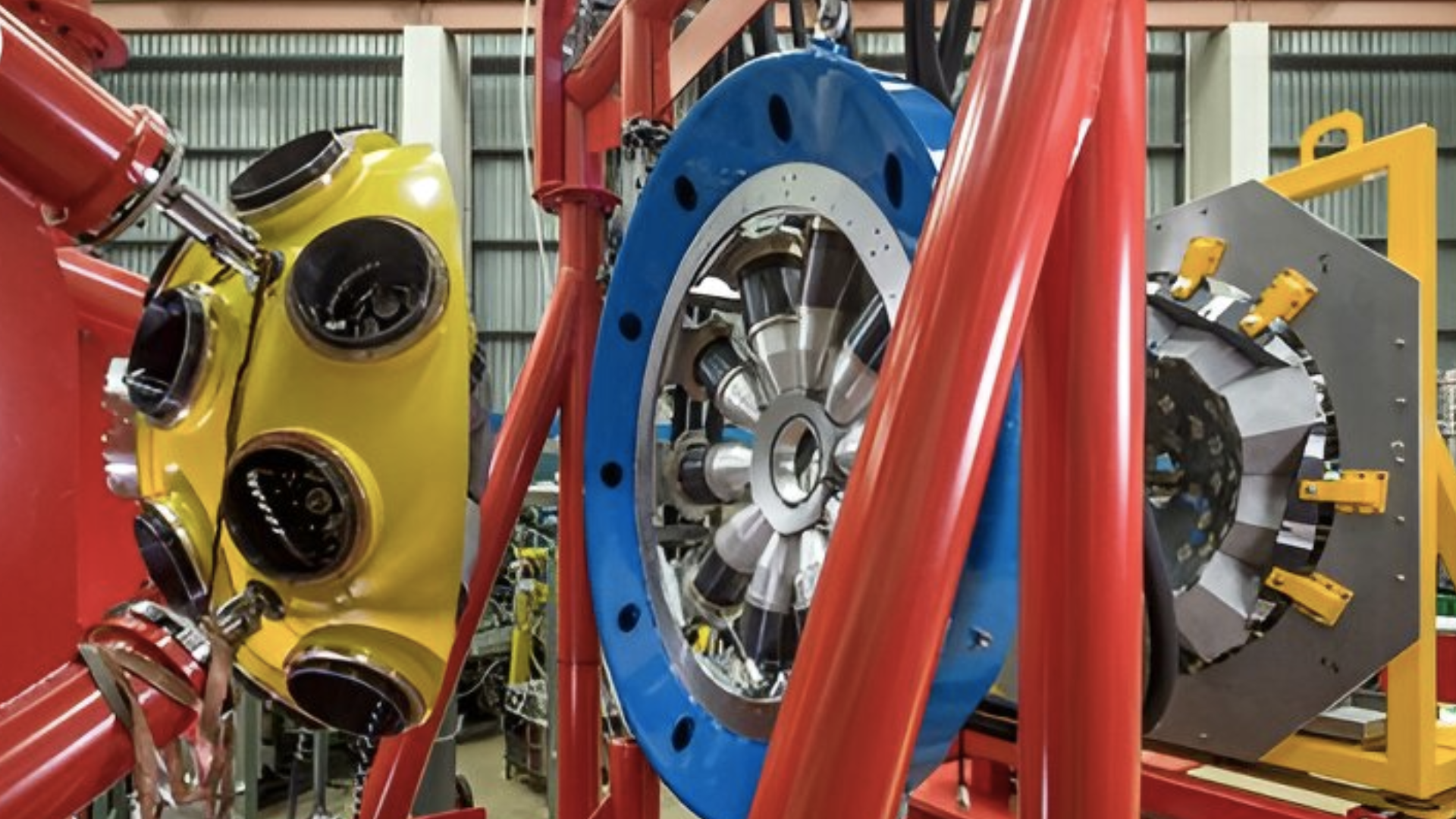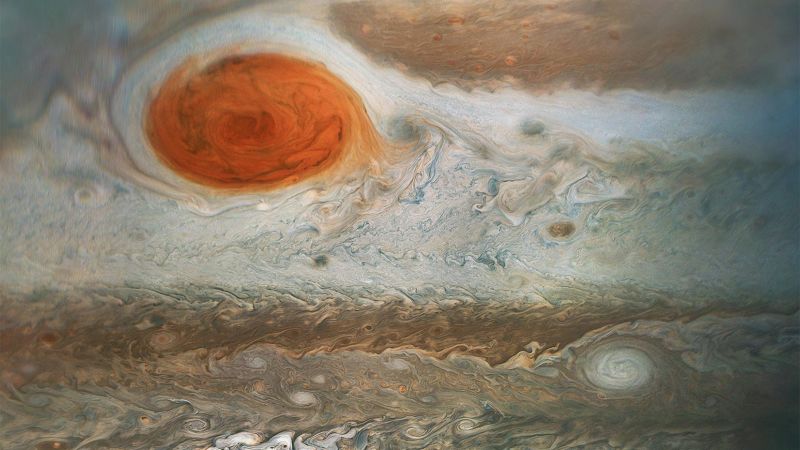JWST observations reveal a mature quasar at cosmic dawn


Artist’s impression of the bright core region of a quasar, an active galaxy. The supermassive black hole at the center is surrounded by a bright disk of gas and dust. The dust component can further obscure the view of the interior and shines primarily in the mid-infrared, light that can be analyzed by the James Webb Space Telescope. A bunch of high-energy particles is extended into space from the immediate vicinity of the black hole perpendicular to the disk. Credit: T. Müller / MPIA
The James Webb Space Telescope observed a galaxy in a particularly young phase of the universe. Looking back, it became clear that light from the galaxy called J1120+0641 took about as long to reach Earth as it took the universe to evolve to the present day. It is inexplicable how the black hole at its center could have weighed over a billion solar masses at the time, as independent measurements have shown. The findings are published in the journal Astronomy of Nature.
Recent observations of material in the vicinity of the black hole were supposed to reveal a particularly efficient feeding mechanism, but they found nothing special. This result is even more remarkable: it may mean that astrophysicists understand less about the evolution of galaxies than they thought. And yet they are by no means disappointing.
The first billion years of cosmic history present a challenge: The earliest known black holes at the centers of galaxies have surprisingly large masses. How did they get so massive, so fast? The new observations described here provide strong evidence against several proposed explanations, particularly against an “ultra-efficient feeding mode” for the earliest black holes.
Limits to the growth of supermassive black holes
Stars and galaxies have changed tremendously over the past 13.8 billion years, the lifespan of the universe. Galaxies have grown larger and gained more mass, either by consuming the surrounding gas or (occasionally) by merging with each other. For a long time, astronomers assumed that supermassive black holes in the centers of galaxies would have gradually grown together with the galaxies themselves.
But the growth of black holes cannot be arbitrarily fast. Matter falling onto a black hole forms a swirling, hot and luminous “accretion disk”. When this happens around a supermassive black hole, the result is an active galactic nucleus. Such brighter objects, known as quasars, are among the brightest astronomical objects in the entire cosmos. But this brightness limits the amount of matter that can fall into the black hole: The light exerts a pressure, which can prevent additional matter from falling in.
How did black holes get so massive, so fast?
That is why astronomers were surprised when, over the past twenty years, observations of distant quasars revealed very young black holes that had nevertheless reached masses of up to 10 billion solar masses. Light takes time to travel from a distant object to us, so looking at distant objects means looking into the distant past. We see the most distant known quasars as they were in an era known as the “cosmic dawn,” less than a billion years after the Big Bang, when the first stars and galaxies formed.
Explaining those early massive black holes is a significant challenge for current models of galaxy evolution. Could it be that early black holes were much more efficient at accreting gas than their modern counterparts? Or could the presence of dust affect quasar mass estimates in a way that led researchers to overestimate the early masses of black holes? There are many explanations proposed at this time, but none that is widely accepted.
A closer look at the early growth of a black hole
Deciding which of the explanations is correct, if any, requires a more complete picture of quasars than was previously available. With the advent of the JWST space telescope, particularly the MIRI telescope’s mid-infrared instrument, astronomers’ ability to study distant quasars took a giant leap forward. For measuring distant quasar spectra, MIRI is 4000 times more sensitive than any previous instrument.
Instruments like MIRI are built by international consortia, with scientists, engineers and technicians working closely together. Naturally, a consortium is very interested in testing whether their instrument works as well as planned.
In exchange for building the instrument, consortia are usually given a certain amount of observation time. In 2019, years before JWST was launched, the European MIRI Consortium decided to use some of this time to observe what was then the most distant quasar known, an object that goes by the designation J1120+0641.
Observation of one of the earliest black holes
The analysis of the observations met Dr. Sarah Bosman, a postdoctoral researcher at the Max Planck Institute for Astronomy (MPIA) and member of the European MIRI consortium. MPIA’s contributions to the MIRI instrument include the construction of a number of key internal parts. Bosman was asked to join the MIRI collaboration specifically to bring expertise on how to best use the instrument to study the early universe, particularly the first supermassive black holes.
The observations were made in January 2023, during the first cycle of JWST observations, and lasted for about two and a half hours. They constitute the first mid-infrared survey of a quasar in the cosmic dawn period, just 770 million years after the Big Bang (redshift z=7). The information comes not from an image, but from a spectrum: the decomposition of the rainbow-shaped object’s light into components of different wavelengths.
Tracking of fast moving dust and gas
The general shape of the mid-infrared spectrum (“continuum”) encodes the properties of a large dust torus surrounding the accretion disk in typical quasars. This torus helps drive matter into the accretion disk, “feeding” the black hole.
Bad news for those whose preferred solution to early massive black holes lies in alternative modes of rapid accretion: the torus, and thus the feeding mechanism in this very early quasar, appears to be the same as for its more modern counterparts. The only difference is one that no model of the rapid growth of early quasars predicted: a slightly higher dust temperature about a hundred Kelvin warmer than the 1300 K found for the hottest dust in the less distant quasars.
The shorter wavelength part of the spectrum, dominated by emissions from the accretion disk itself, shows that to us as distant observers, the quasar’s light is not dimmed by dust any more than usual. Arguments that perhaps we are simply overestimating the early masses of black holes due to extra dust are no solution either.
Early quasars ‘shockingly normal’
The broad quasar line region, where clumps of gas swirl around the black hole at speeds close to the speed of light—which allow deductions about the black hole’s mass and the density and ionization of the surrounding matter—also appears normal. In almost all properties that can be deduced from the spectrum, J1120+0641 is no different from quasars at later times.
“Overall, the new observations only add to the mystery: the early quasars were remarkably normal. No matter what wavelengths we observe them at, quasars are nearly identical across all ages of the universe,” says Bosman. Not only the supermassive black holes themselves, but also their feeding mechanisms were apparently already fully “mature” when the universe was only 5% of its current age.
Ruling out a number of alternative solutions, the results strongly support the idea that supermassive black holes started with significant masses from the start, in the parlance of astronomy: that they are “primordial” or “seeded big”. Supermassive black holes did not form from the remnants of early stars, then became massive very quickly. They must have formed early with initial masses of at least a hundred thousand solar masses, presumably from the collapse of early massive gas clouds.
More information:
Sarah EI Bosman et al, A Ripe Quasar at the Cosmic Dawn Revealed by JWST Frame Infrared Spectroscopy, Astronomy of Nature (2024). DOI: 10.1038/s41550-024-02273-0
Provided by the Max Planck Society
citation: A black hole of unexplained mass: JWST observations reveal a mature quasar at cosmic dawn (2024 June 21) Retrieved June 22, 2024 from https://phys.org/news/2024-06-black-hole -inexplicable-mass- jwst.html
This document is subject to copyright. Except for any fair agreement for study or private research purposes, no part may be reproduced without written permission. The content is provided for informational purposes only.





